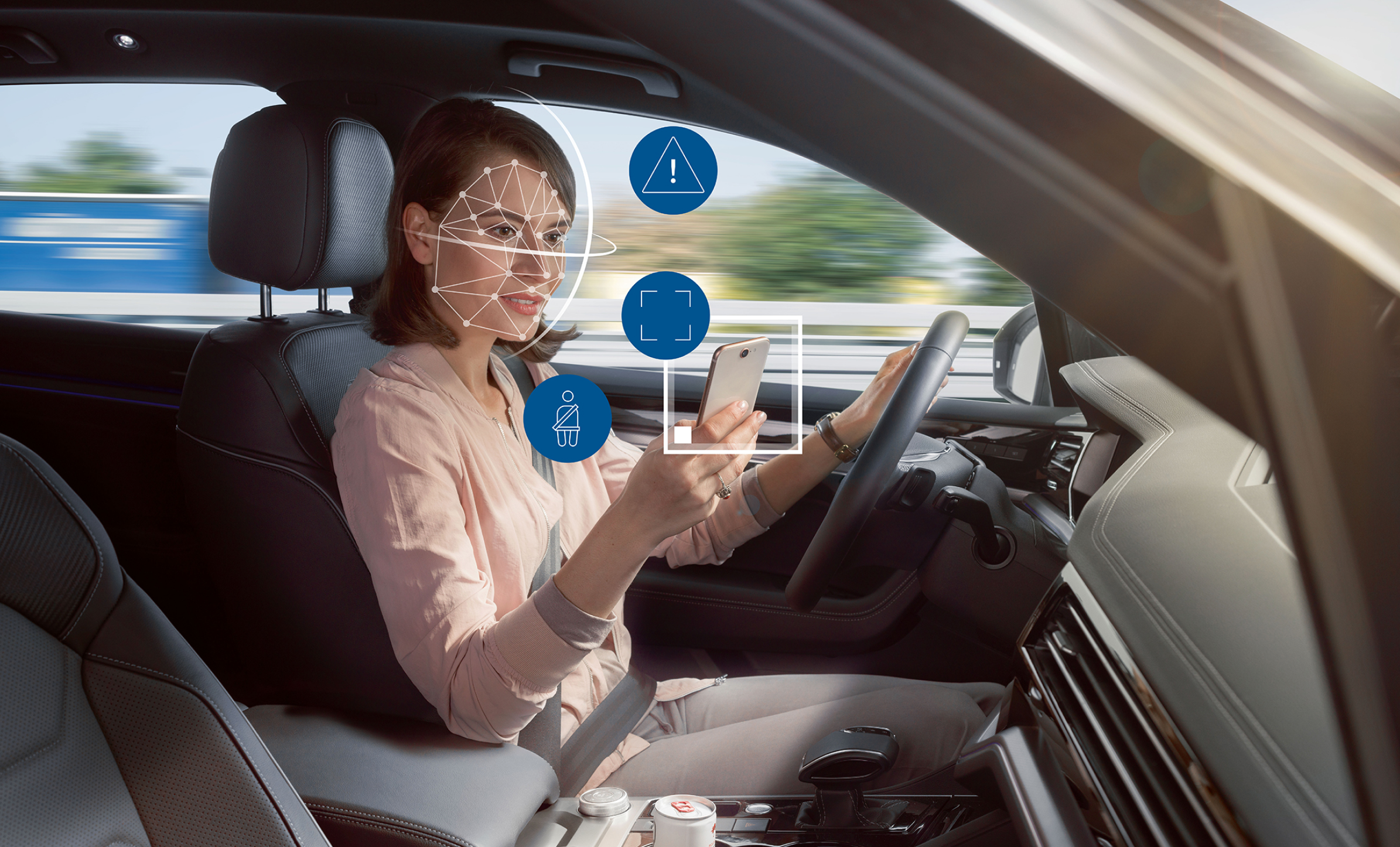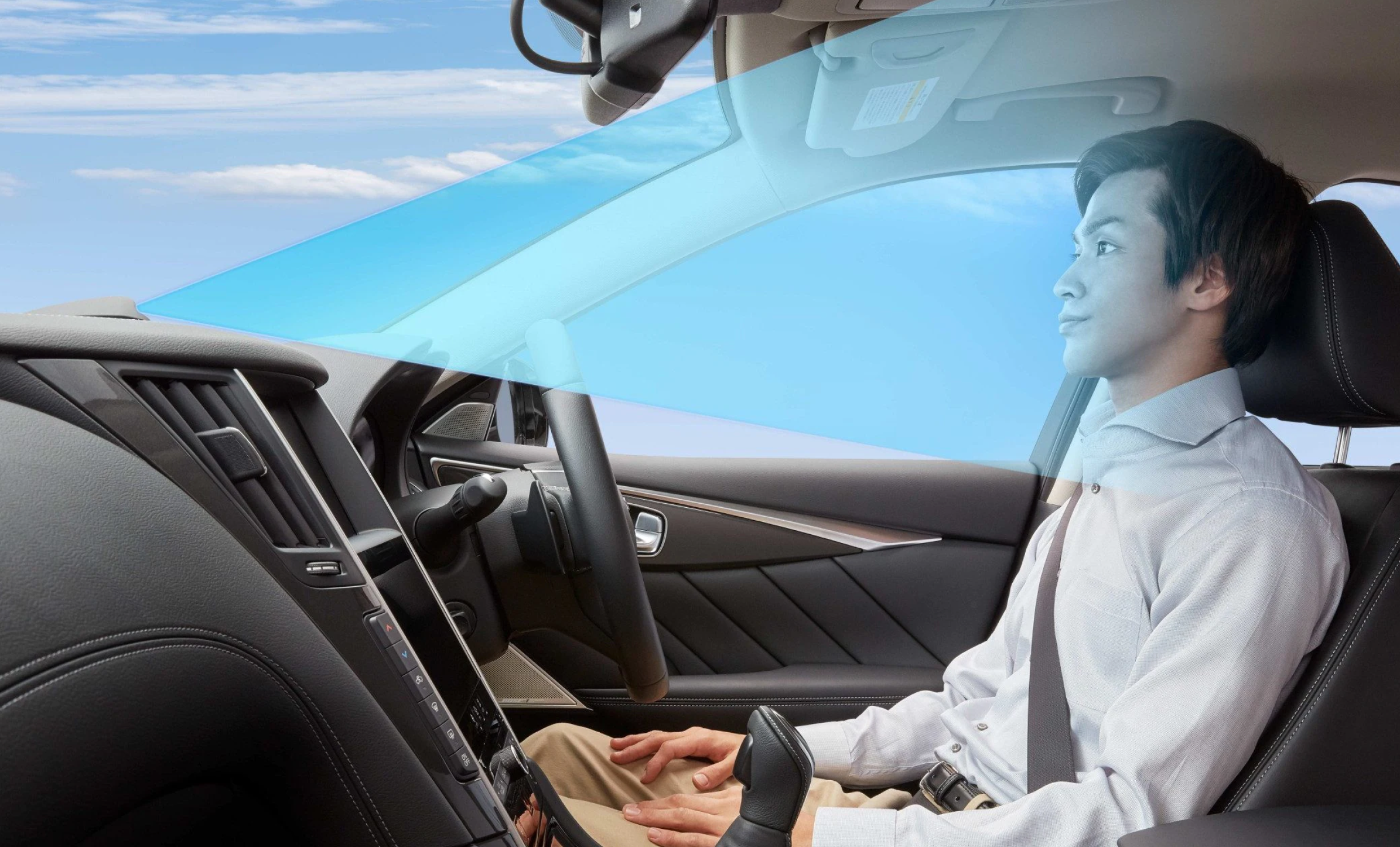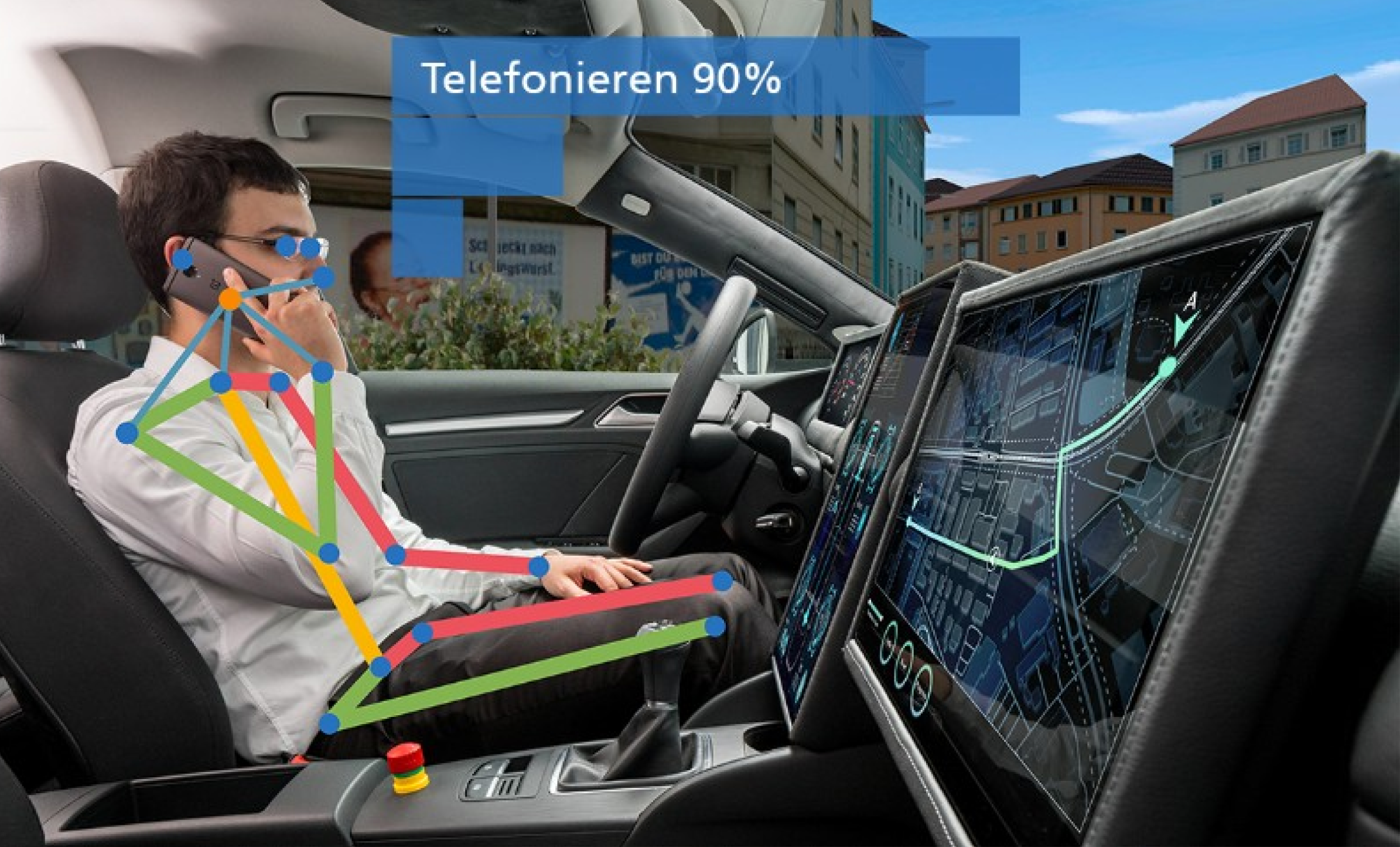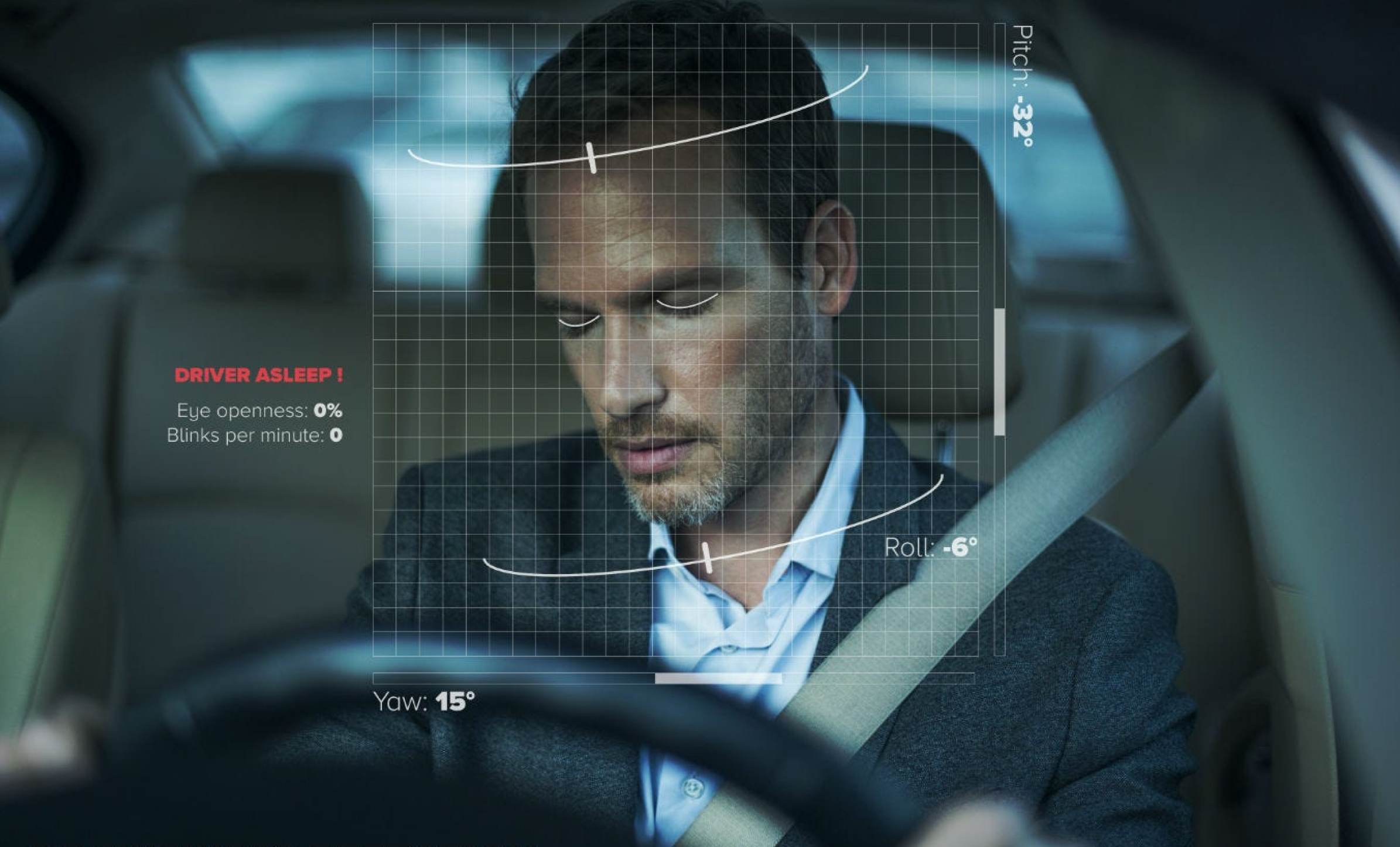The Next Frontier in Passenger Safety: Exploring In-Cabin Data Solutions
Published date: 18.04.2024
Read time: 9 min
As the automotive industry evolves, the importance of in-cabin data and its accompanying annotation solutions has become increasingly pivotal. This growth is particularly noticeable in the development of autonomous vehicles, advanced driver-assistance systems (ADAS), and personalized in-vehicle experiences. Here, we delve into what in-cabin data encompasses, the data annotation needed, the role of annotation solutions, and their collective impact on the future of automotive technology.
Understanding In-Cabin Data

In-cabin data refers to the information collected from within the vehicle’s cabin during its operation. This data is gathered through an array of sensors, cameras, and microphones installed inside the vehicle. The primary purpose of these instruments is to monitor the environment within the vehicle, focusing on aspects such as driver behavior, passenger presence, and overall cabin ambiance.
In addition to this, we need to know about:
- Types of data collected in the cabin – This includes things like driver monitoring, which involves tracking eye movement, facial expressions, and body posture to assess driver alertness and focus. Also, sensing the presence and position of passengers to optimize safety features and comfort settings.
- The role of sensors and cameras in data acquisition – Sensors and cameras play a crucial role in data acquisition within modern vehicles, serving as the primary means for collecting a wide array of real-time information about both the vehicle’s interior and exterior environments. These devices capture everything from driver behavior and passenger presence to external road conditions, enabling advanced systems to analyze and respond to dynamic situations for improved safety, efficiency, and comfort in driving experiences.
In-Cabin Monitoring Technologies

In-cabin monitoring technologies have become increasingly sophisticated, incorporating a variety of sensors and systems designed to enhance safety, comfort, and the overall driving experience. Here are some key technologies currently in use:
- Driver Monitoring Systems (DMS): These systems utilize cameras and sensors to observe the driver’s facial expressions, eye movements, and head position. DMS technology can detect signs of drowsiness, distraction, or impairment, alerting the driver or taking corrective actions to ensure safety.
- Occupant Monitoring Systems (OMS): Similar to DMS, OMS focuses on monitoring the condition and presence of all passengers within the vehicle. These systems can detect the size and position of each occupant to optimize airbag deployment and seatbelt tension in the event of a crash.
- Interior Cameras: These cameras provide a comprehensive view of the cabin, capturing detailed video data that can be used for everything from monitoring theft to recording incidents for insurance purposes.
Data Annotation for In-Cabin Monitoring

Data annotation for in-cabin monitoring is a critical process that involves labeling the vast amounts of data collected from sensors and cameras within the vehicle to train machine learning models effectively. The following data annotation processes are necessary for in-cabin monitoring:
- The process of annotating in-cabin data – This involves meticulously labeling the diverse forms of information collected from the vehicle’s interior sensors and cameras. This task requires human annotators or automated systems to accurately tag visual and sensory data with specific metadata, such as marking points on images to denote the presence and position of occupants or annotating video footage to highlight actions indicating driver distraction or drowsiness. This detailed annotation is essential for training AI systems to understand and predict occupant behavior, thereby enhancing both the safety and functionality of vehicle systems.
- Various types of annotations – The annotating methods needed here are bounding boxes, which involve drawing rectangles around objects or persons of interest within an image or video frame. It is widely used to identify and track the location of drivers, passengers, and objects within the vehicle cabin. Also, semantic segmentation is needed, which labels every pixel of an image to a corresponding class of objects.
- Challenges in accurately annotating diverse in-cabin activities – Accurately annotating diverse in-cabin activities presents several challenges, primarily due to the complexity and variability of human behavior within the confined space of a vehicle. First, the range of possible actions and interactions, from subtle facial expressions indicating fatigue to quick, reflexive movements during emergencies, requires highly detailed and precise annotations to capture effectively. Additionally, varying lighting conditions within the cabin can obscure visual data, making it difficult for annotators to identify and label activities accurately.
How Annotation Improves the Accuracy and Reliability of Monitoring Systems
Annotation significantly improves the accuracy and reliability of monitoring systems by providing labeled data that allow machine learning algorithms to recognize and interpret patterns effectively. Through annotated data, monitoring systems can learn to distinguish between normal and abnormal behaviors, enhancing their ability to detect potential safety risks, such as driver distraction or passenger distress, with greater precision. This iterative process of training with annotated data leads to more refined algorithms capable of making informed decisions in real time, ultimately enhancing the overall performance and reliability of in-cabin monitoring systems.
Applications of In-Cabin Monitoring

There are many important applications of in-cabin monitoring. These include:
- Safety applications – In-cabin monitoring technology contributes significantly to safety by detecting driver fatigue, distraction, and impairment in real-time, prompting timely alerts and interventions to prevent accidents. Additionally, these systems optimize safety measures such as airbag deployment and seat belt tension based on occupant size, position, and behavior, minimizing the risk of injury during collisions.
- Comfort and convenience – Manufacturers can enhance the comfort and convenience by personalizing the in-vehicle experience to individual preferences, adjusting climate control, seat settings, and entertainment options accordingly. Moreover, these systems can automate tasks such as adjusting lighting and infotainment based on occupant presence and behavior, creating a more intuitive and enjoyable driving environment for passengers.
- Implications for autonomous vehicle development – By ensuring the safety and comfort of occupants in the absence of human drivers. These systems enable autonomous vehicles to monitor and respond to passenger needs, ensuring a safe and seamless journey. Additionally, in-cabin monitoring data provides valuable insights for refining autonomous driving algorithms, improving their ability to understand and adapt to the dynamic environment within the vehicle.
Ethical and Privacy Considerations
When looking at the questions surrounding in-cabin monitoring technology, a lot of these questions revolve around issues of consent, data security, and individual autonomy. Ensuring transparent communication and obtaining explicit consent from occupants regarding data collection and usage is paramount, as is implementing robust encryption and data anonymization techniques to safeguard sensitive information. Balancing the benefits of enhanced safety and convenience with respect for personal privacy rights remains a critical challenge in the development and deployment of in-cabin monitoring systems.
Future Trends in In-Cabin Monitoring and Annotation
When looking into the future, in-cabin monitoring and annotation are likely to focus on enhancing the sophistication and intelligence of these systems. Expect to see advancements in AI algorithms capable of understanding nuanced human behaviors, as well as the integration of multimodal sensor fusion techniques for more comprehensive data analysis. Additionally, there will likely be a continued emphasis on improving privacy protections and data security measures to address evolving regulatory concerns and consumer expectations.
Furthermore, future trends may involve the integration of in-cabin monitoring with external data sources, such as vehicle-to-vehicle (V2V) and vehicle-to-infrastructure (V2I) communication systems. This holistic approach could enable vehicles to anticipate and respond to changing traffic conditions and environmental factors, further enhancing safety and efficiency. Additionally, advancements in edge computing and onboard processing capabilities may enable real-time analysis of in-cabin data, reducing reliance on external servers and minimizing latency in decision-making. As technology continues to evolve, the potential for in-cabin monitoring and annotation to revolutionize the automotive industry and redefine the driving experience is vast and exciting.
Conclusion
In-cabin data, supported by robust annotation solutions, is set to revolutionize the automotive industry by enhancing safety protocols, personalizing user experiences, and paving the way for fully autonomous driving. As technology progresses, the ability to seamlessly integrate these data-driven insights into everyday vehicle operation will become increasingly refined, marking a significant leap forward in how we interact with our vehicles.






